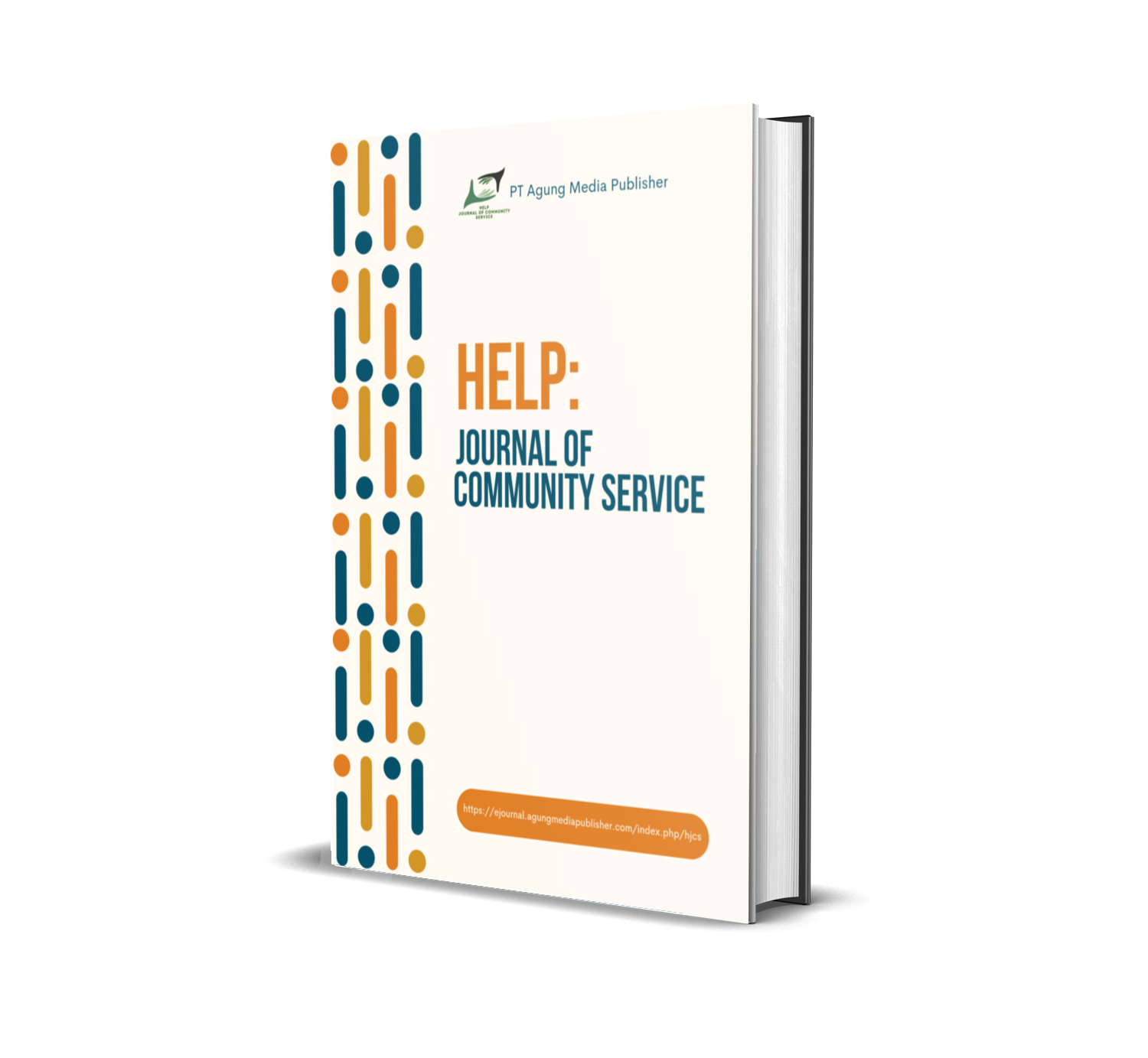Ngobrol Pintar: A Community Service Program on Financial Literacy and Investment Awareness
Main Article Content
Abstract
Financial literacy is a crucial competence in strengthening family financial planning and investment awareness. This community service program, Ngobrol Pintar (NGOPI), was initiated by Universitas Terbuka Medan in collaboration with Dharma Wanita Persatuan to address the need for accessible financial education in society. The program was implemented through an interactive seminar with 117 participants consisting of parents and children. The dialogue-based approach focused on gold investment as a practical entry point for understanding financial literacy. The seminar achieved active engagement from participants and increased awareness of financial management within the family context. Participants reported improved understanding of saving and investing practices, particularly related to gold as a long-term investment instrument. The findings indicate that financial literacy training through dialogue can effectively empower communities. Beyond a one-time session, the NGOPI initiative promotes sustainability by developing community-based financial literacy hubs, producing digital learning resources, and establishing partnerships with financial institutions and regulatory bodies. This approach positions financial literacy as an ongoing dialogue to build a culture of investment awareness and foster long-term financial resilience.
Downloads
Article Details
Section

This work is licensed under a Creative Commons Attribution-ShareAlike 4.0 International License.
You are free to:
- Share — copy and redistribute the material in any medium or format for any purpose, even commercially.
- Adapt — remix, transform, and build upon the material for any purpose, even commercially.
- The licensor cannot revoke these freedoms as long as you follow the license terms.
Under the following terms:
- Attribution — You must give appropriate credit , provide a link to the license, and indicate if changes were made . You may do so in any reasonable manner, but not in any way that suggests the licensor endorses you or your use.
- ShareAlike — If you remix, transform, or build upon the material, you must distribute your contributions under the same license as the original.
- No additional restrictions — You may not apply legal terms or technological measures that legally restrict others from doing anything the license permits.
Notices:
You do not have to comply with the license for elements of the material in the public domain or where your use is permitted by an applicable exception or limitation .
No warranties are given. The license may not give you all of the permissions necessary for your intended use. For example, other rights such as publicity, privacy, or moral rights may limit how you use the material.
How to Cite
References
Ali, M. A. S., Ammer, M. A., & Elshaer, I. A. (2022). Determinants of Investment Awareness: A Moderating Structural Equation Modeling-Based Model in the Saudi Arabian Context. Mathematics, 10(20). https://doi.org/10.3390/math10203829
Astutik, S., & Soerodjo, I. (2023). The Role of The Financial Services Authority in Setting the Interest Rate For Financial Technology Loans As Consumer Protection of Financial Services. Yuridika, 38(2). https://doi.org/10.20473/ydk.v38i2.40064
Danila, N., Shahwan, Y., Ali, Z., & Djalaluddin, A. (2019). The linkages between financial literacy and its application in financial decision-making among academicians in Indonesia. Humanities and Social Sciences Reviews, 7(5). https://doi.org/10.18510/hssr.2019.75167
Dewi, V. I., Febrian, E., Effendi, N., Anwar, M., & Nidar, S. R. (2020). Financial literacy and its variables: The evidence from indonesia. Economics and Sociology, 13(3). https://doi.org/10.14254/2071-789X.2020/13-3/9
Elshaer, I. A., & Sobaih, A. E. E. (2023). Antecedents of Risky Financial Investment Intention among Higher Education Students: A Mediating Moderating Model Using Structural Equation Modeling. Mathematics, 11(2). https://doi.org/10.3390/math11020353
Garg, N., & Singh, S. (2018). Financial literacy among youth. In International Journal of Social Economics (Vol. 45, Issue 1). https://doi.org/10.1108/IJSE-11-2016-0303
Hermansson, C., & Jonsson, S. (2021). The impact of financial literacy and financial interest on risk tolerance. Journal of Behavioral and Experimental Finance, 29. https://doi.org/10.1016/j.jbef.2020.100450
Huston, S. J. (2010). Measuring Financial Literacy. Journal of Consumer Affairs, 44(2). https://doi.org/10.1111/j.1745-6606.2010.01170.x
Hutabarat, S. H., Hartiwiningsih, & Suwadi, P. (2023). RECONSTRUCTING THE AUTHORITIES OF INVESTIGATORS OF THE FINANCIAL SERVICE AUTHORITY. Journal of Law and Sustainable Development, 11(2). https://doi.org/10.55908/sdgs.v11i2.323
Jaswadi, J., Purnomo, H., & Sumiadji, S. (2024). Financial statement fraud in Indonesia: a longitudinal study of financial misstatement in the pre- and post-establishment of financial services authority. Journal of Financial Reporting and Accounting, 22(3). https://doi.org/10.1108/JFRA-10-2021-0336
Kaiser, T., & Menkhoff, L. (2017). Does financial education impact financial literacy and financial behavior, and if so, when? World Bank Economic Review, 31(3). https://doi.org/10.1093/wber/lhx018
Lone, U. M., & Bhat, S. A. (2024). Impact of financial literacy on financial well-being: a mediational role of financial self-efficacy. Journal of Financial Services Marketing, 29(1). https://doi.org/10.1057/s41264-022-00183-8
Lusardi, A., & Mitchell, O. S. (2014). The economic importance of financial literacy: Theory and evidence. Journal of Economic Literature, 52(1). https://doi.org/10.1257/jel.52.1.5
Mishra, R. (2018). Financial literacy, risk tolerance and stock market participation. Asian Economic and Financial Review, 8(12). https://doi.org/10.18488/journal.aefr.2018.812.1457.1471
Murhadi, W. R., Kencanasar, F. R., & Sutedjo, B. S. (2023). THE INFLUENCE OF FINANCIAL LITERACY AND FINANCIAL INTEREST ON THE FINANCIAL RISK TOLERANCE OF INVESTOR IN INDONESIA. Journal of Law and Sustainable Development, 11(2). https://doi.org/10.55908/sdgs.v11i2.310
OECD. (2020). OECD Digital Economy Outlook 2020. OECD. https://doi.org/10.1787/bb167041-en
Riyazahmed, K. (2021). Investment motives and preferences - An empirical inquiry during COVID-19. Investment Management and Financial Innovations, 18(2). https://doi.org/10.21511/imfi.18(2).2021.01
Sulistiyaningsih, N., & Shultan, S. T. A. (2021). Potensi Bank Syariah Indonesia (BSI) dalam Upaya Peningkatan Perekonomian Nasional. Al-Qanun: Jurnal Pemikiran Dan Pembaharuan Hukum Islam, 24(1). https://doi.org/10.15642/alqanun.2021.24.1.33-58
Swiecka, B., Yeşildağ, E., Özen, E., & Grima, S. (2020). Financial literacy: The case of Poland. Sustainability (Switzerland), 12(2). https://doi.org/10.3390/su12020700


